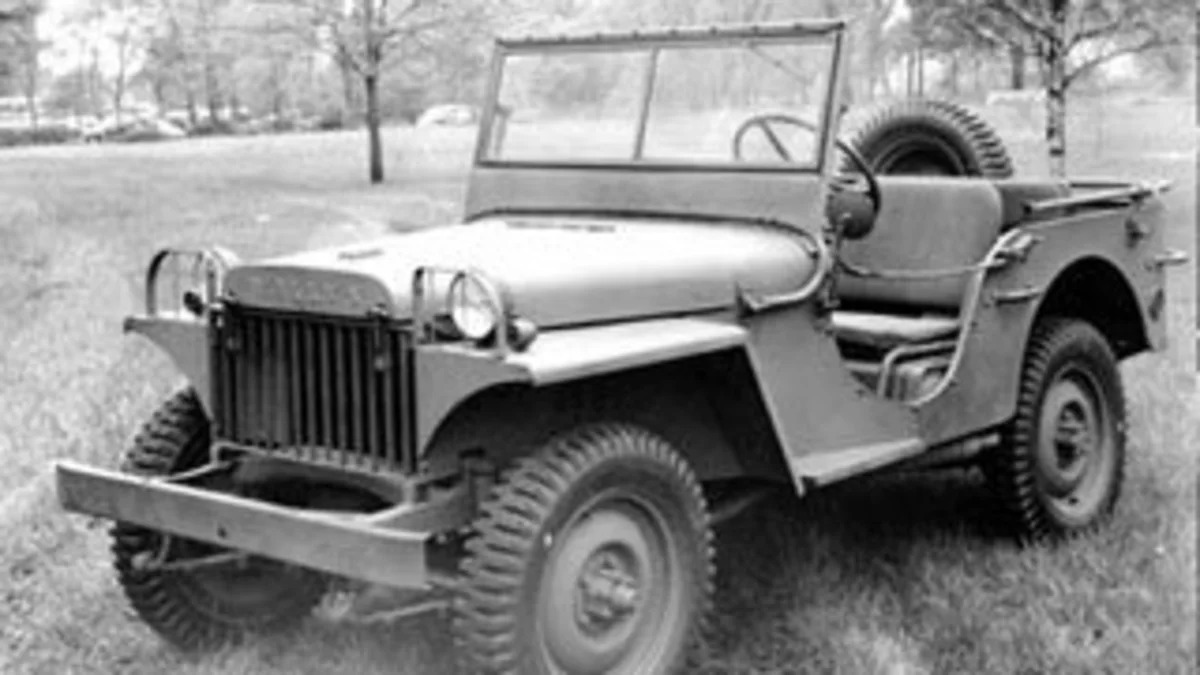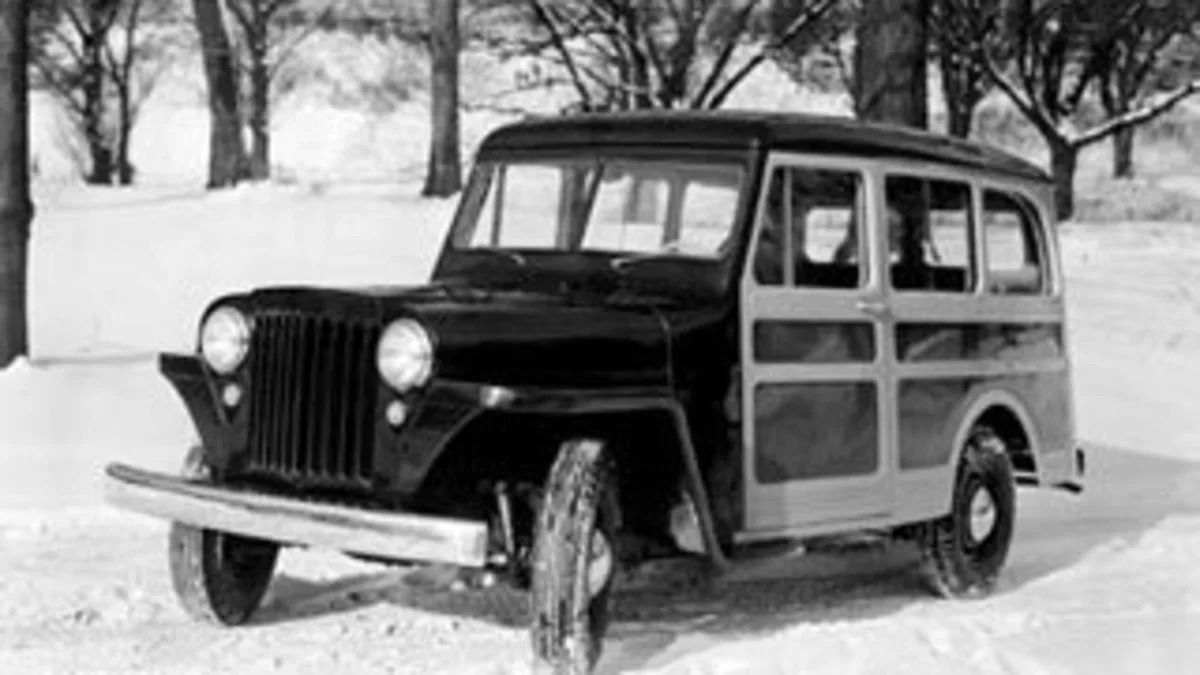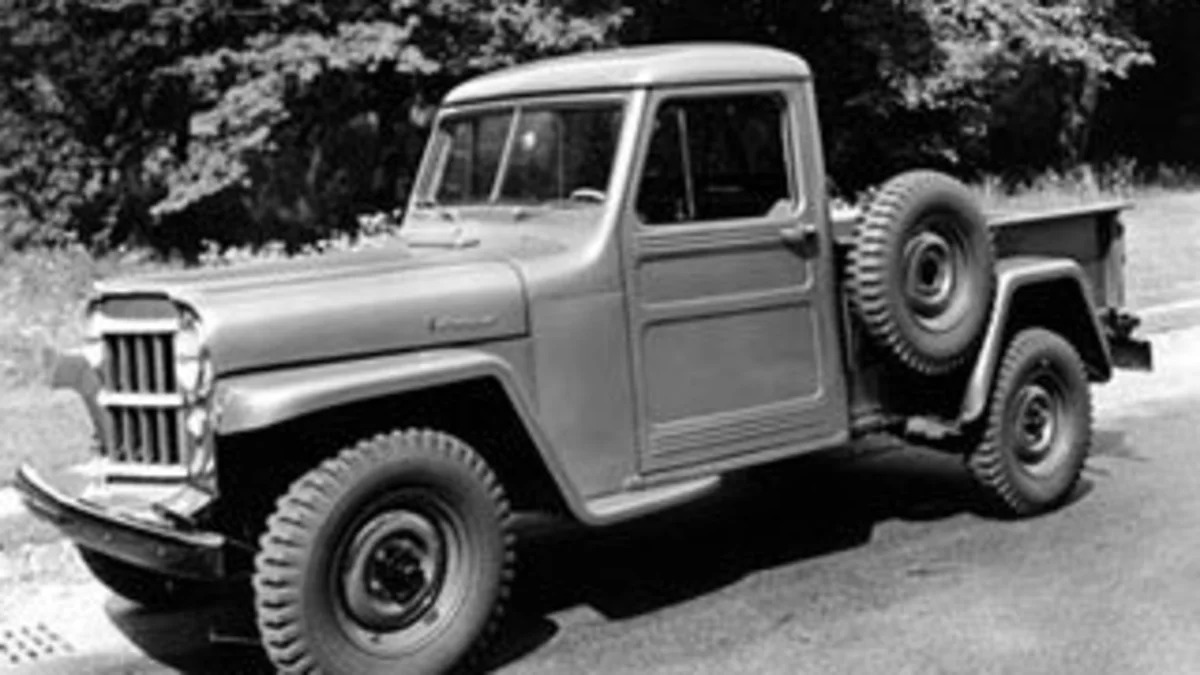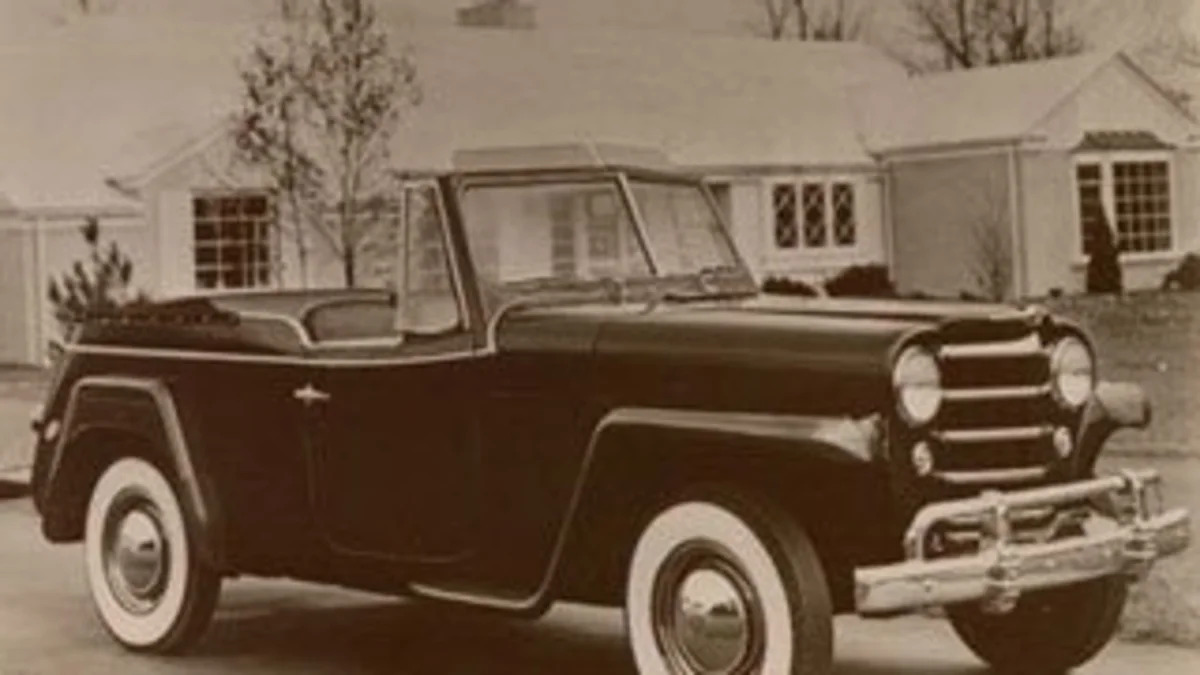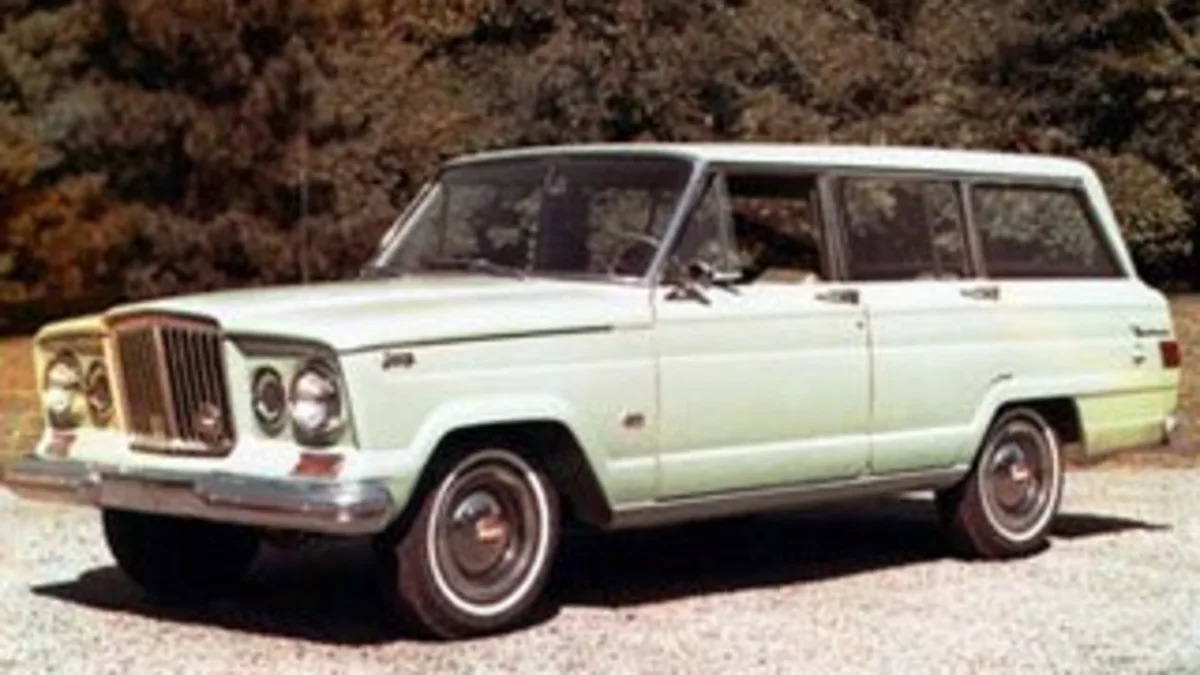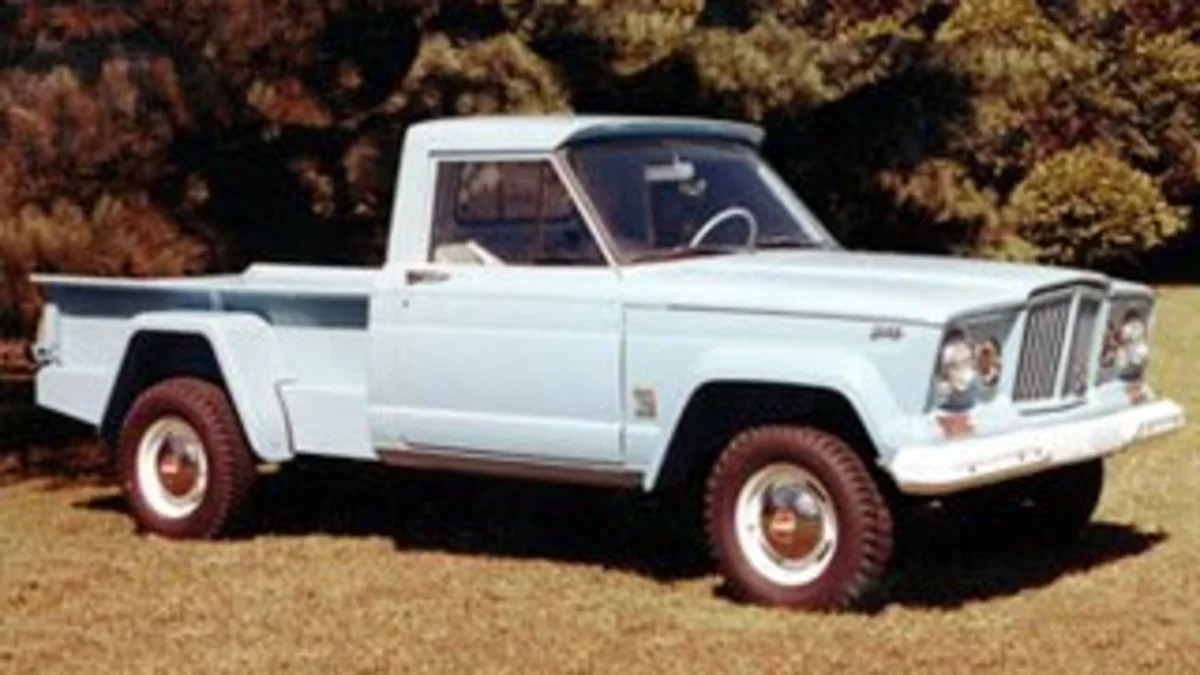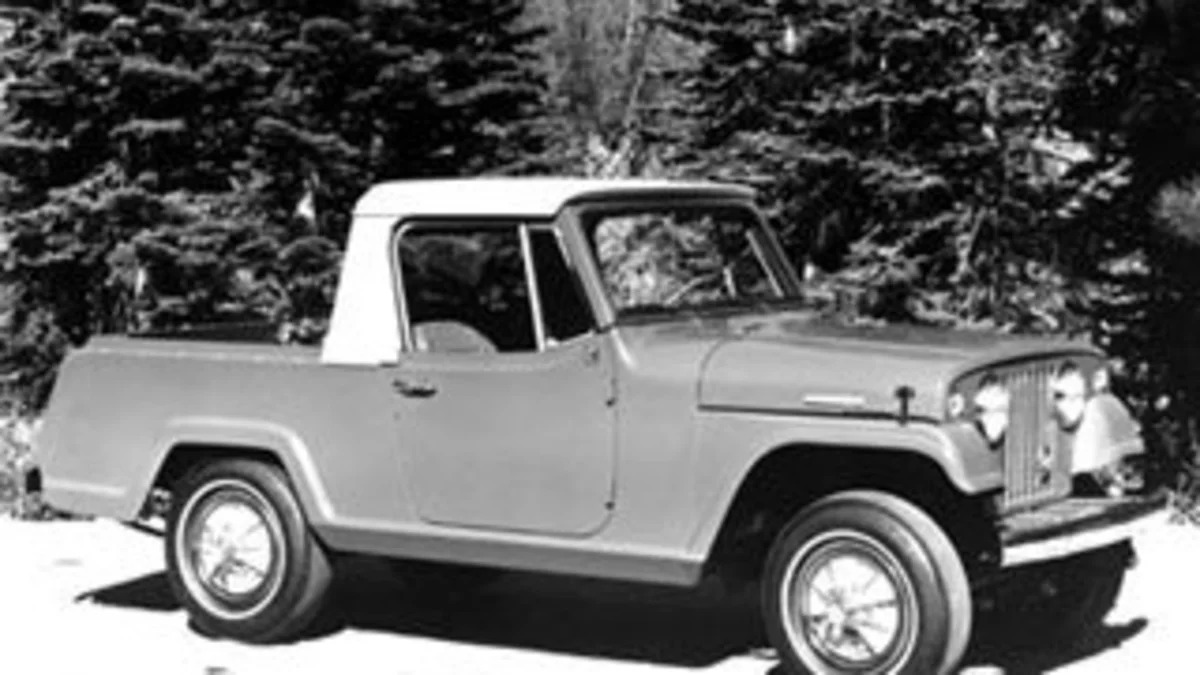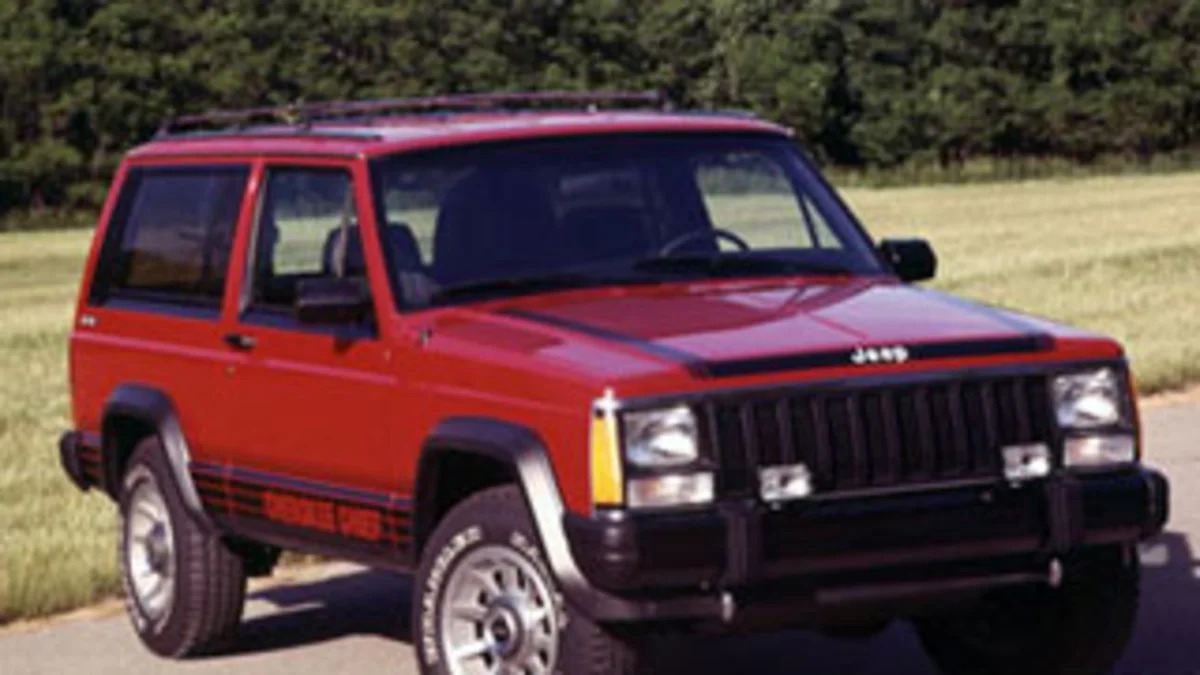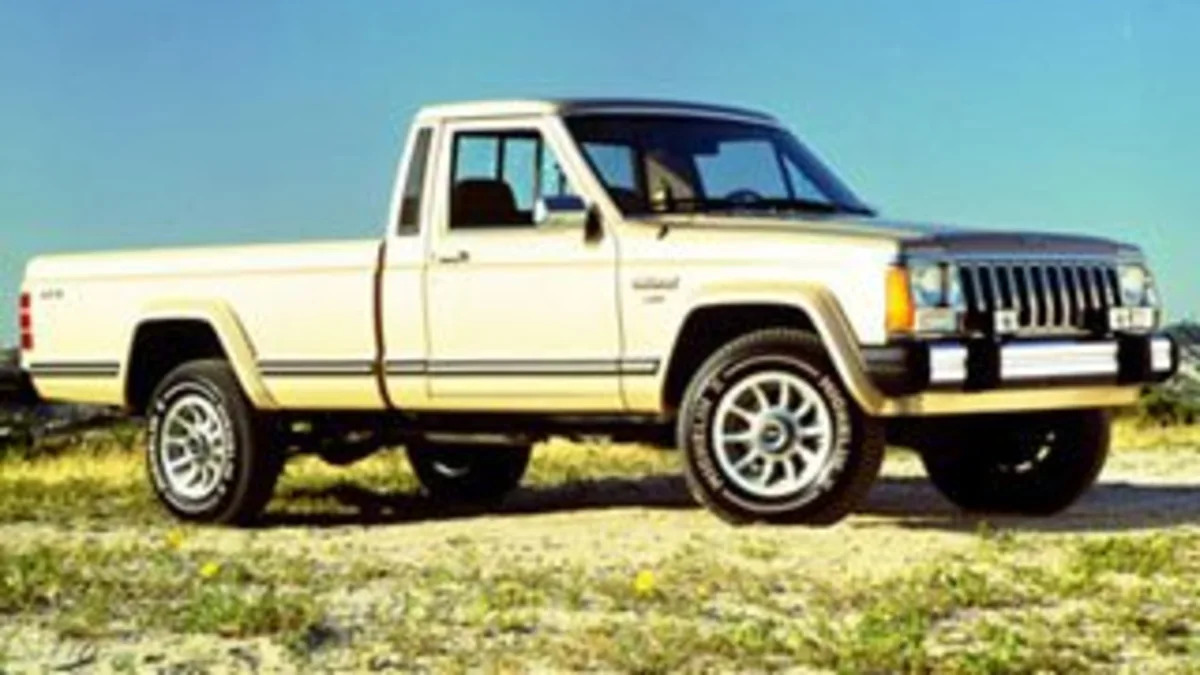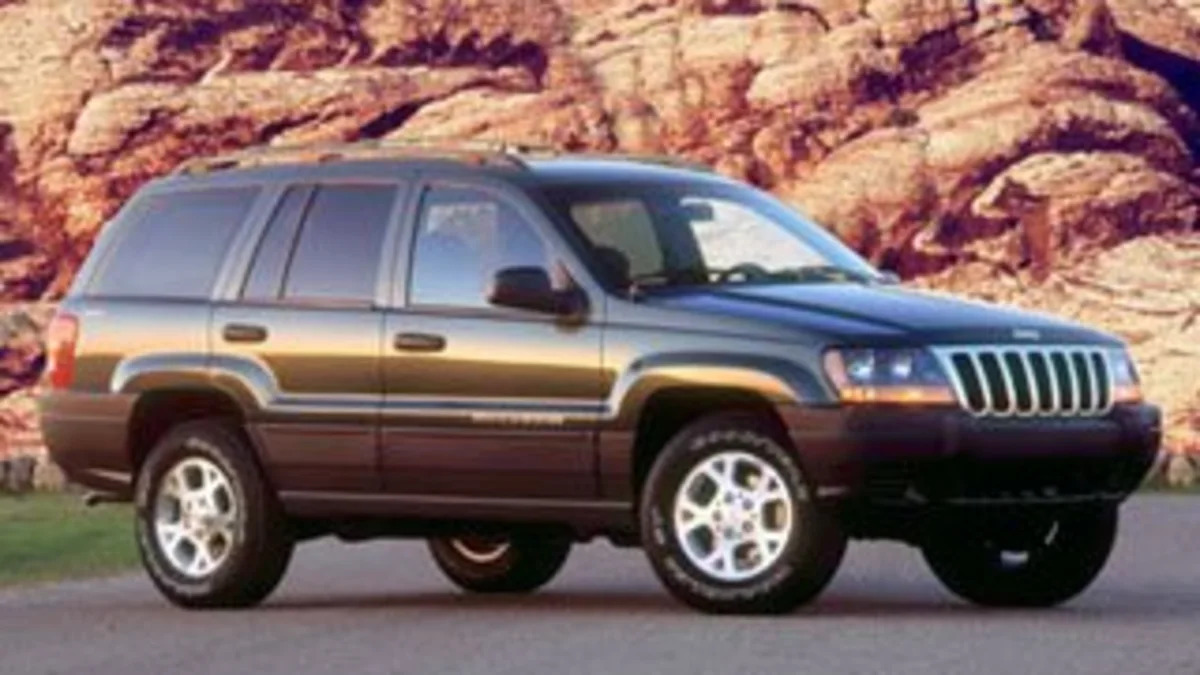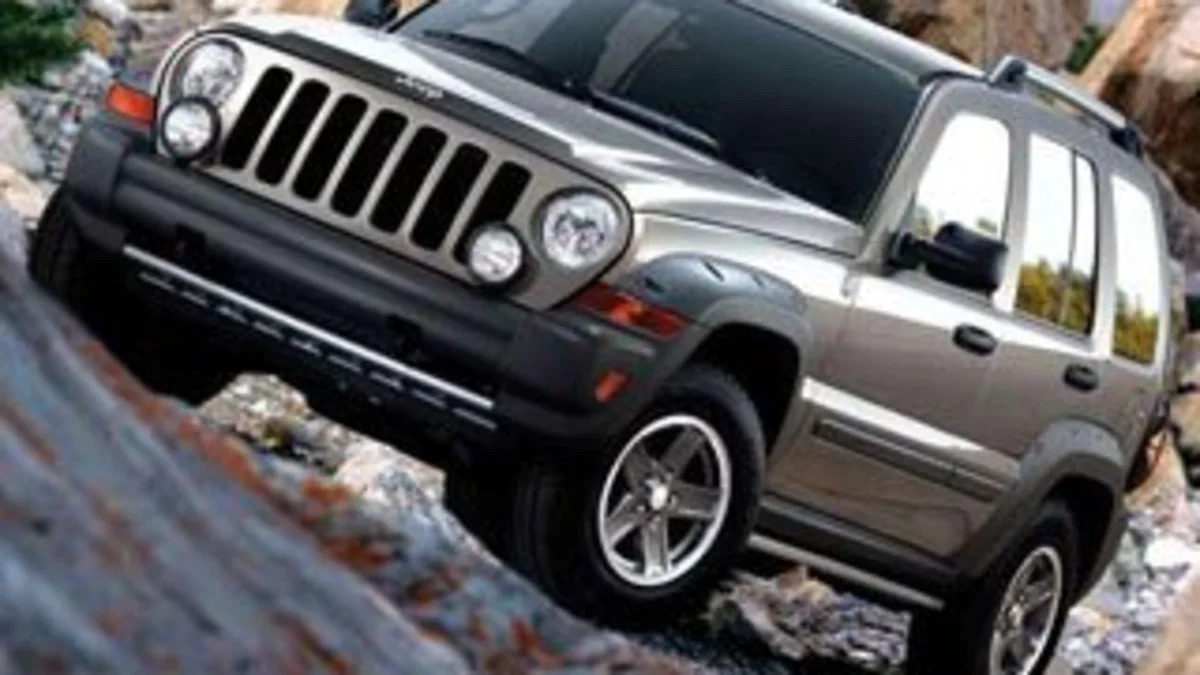Jeep 70th anniversary
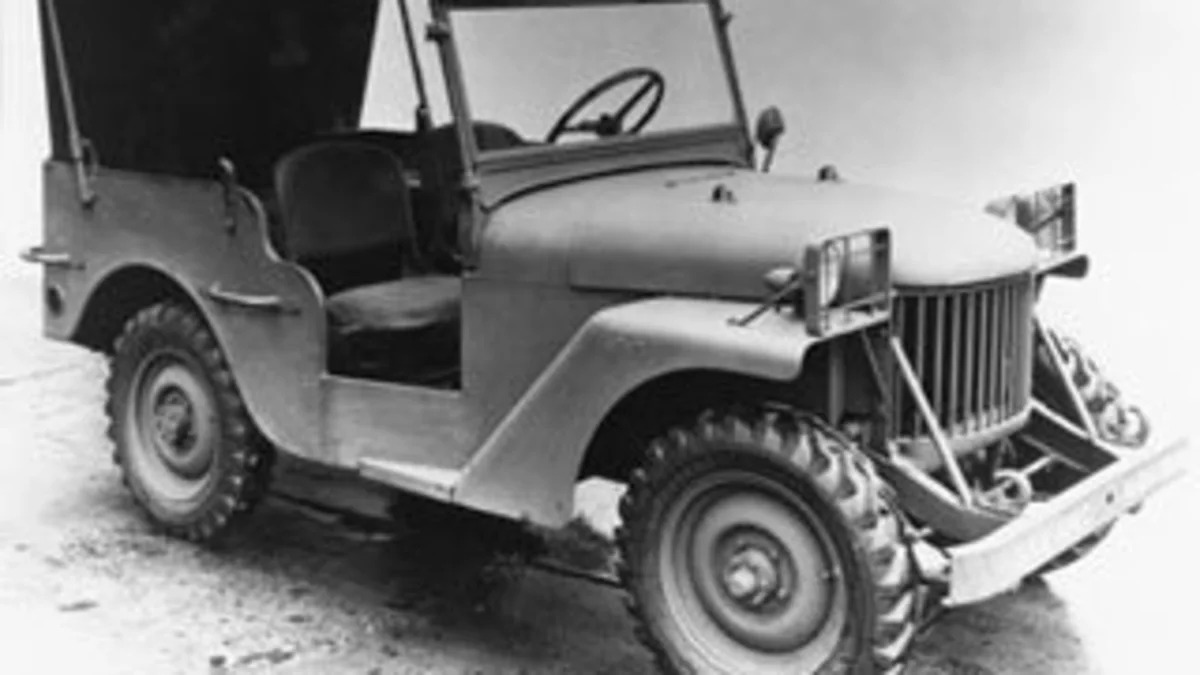
-

- Image Credit: Jeep
Introduction
The iconic Jeep brand began life as a replacement for mules and wagons to ferry soldiers and move gun placements.
As it celebrates its 70th anniversary this month, AOL Autos salutes the brand that helped America win wars, and now represents the most off-road capable rock crawlers and kid haulers on the market today.
A picture gallery of our favorite Jeeps through the years: -
- Image Credit: Jeep
1941-1945 Jeep Willys MB
The grand-daddy of them all. The original Willys MB was a critical tool for the Allies winning the war. Before the U.S. got into WW2, the British had nothing near as useful or reliable.
Meantime, the Germans had developed a sturdy, air-cooled utility vehicle, the Kubelwagen, that had started out life as the Volkswagen, but was adapted for military use.
The original GPW was powered by a 60 hp engine that produced 85 ft. lbs. of torque.
There are fans of the Jeep all over the world because of the number that were left behind by the U.S. military after the war. When American troops began to leave the Philippines at the end of World War II, for example, hundreds of surplus Jeeps were sold or given to local Filipinos. The Filipinos stripped down the jeeps to accommodate several passengers, added metal roofs for shade, and decorated the vehicles.
Germany, for another example, is home to one of the biggest Jeep enthusiast clubs in the world. -
- Image Credit: Jeep
1945-1949 Jeep CJ
The Jeep that closed out the war was meant to be the civilianized version of the tough Army vehicle. Willys, to increase demand and imagination for the Jeep, began spawning accessory packages, like one that bolted high U-shaped brackets to the front and rear bumpers, forming a rack for ladders and fire fighting equipment--ideal for rural areas and national parks to deal with small brush fires.
The beauty of the Jeep CJ is no one was worried about where they drilled holes or fastened brackets to carry gear and tools. It was really a rolling toolbox. -
- Image Credit: Jeep
1946-1965 Jeep Willys Wagon
The ad for this wagon hailed: "Here's a New Type of Car."
"Willys-Overland is producing a truly different type of passenger car with many unduplicated advantages. Its all steel body is really spacious--lots of headroom and legroom for six people, plus big luggage space--with wide, tall windows all around."
Besides the Station Wagon, the car was also sold, oddly, as the Jeep Station Sedan.
One ad, illustrated as was typical for the day, shows the woody Willys driven out onto a field where a family is having a picnic and the mother is dishing out hot dogs. The SUV was born. -
- Image Credit: Jeep
1947-1965 Jeep Willys Overland Truck
In 1947, Willys-Overland introduced their new line of 1 ton and 1/2 ton trucks. They sold well.
Things went on like that until 1953 when the company was bought by Kaiser. They continued to produce the 1 and 1/2 ton trucks until 1965, by which time the company had been renamed Kaiser-Jeep.
Like the Ford F Series, this truck was adapted for many uses--tow trucks, farm trucks to carry hay, panel trucks, etc. -
- Image Credit: Jeep
1948-1951 Jeep Jeepster
Willys developed the Jeepster to crossover from their "utilitarian" type military vehicles, to the passenger automobile market. The car was originally only offered with rear-wheel drive, thus limiting its appeal with traditional Jeep customers. While its distinctive boxy styling was a hit with critics, it did not catch on with the public. In the end, 19,132 original VJ Jeepsters were produced.
It is a favorite of Chrysler designers today, and there is a lot of desire within the company to revive the idea of the Jeepster in the new era of ownership under Italian automaker Fiat. -
- Image Credit: Jeep
1954-1983 Jeep CJ
The CJ was the direct descendant of the Willys Jeep from WW2.
In the mid 50s, Willys was trimming its interest in passenger cars and focusing more on finding new uses and variations for the CJ. It was peace-time, so sales to the military were down.
The CJ5 was a bit bigger than the previous model, and a bit more refined and comfortable without giving up ruggedness. Bested only by the Volkswagen Beetle for longevity, the CJ5 stayed in production for a remarkable 29 years.
A total of 603,303 CJ-5s were produced between 1954 and 1983. Besides work and recreation vehicles, CJs also served as ambulances, postal vehicles, delivery trucks and "island" vehicles in the Caribbean.
The interiors were bare boned. And if you got caught in the rain while driving with the top down or sides off, no problem. There were drain holes in the floor for the water to pass through. -
- Image Credit: Jeep
1963-1967 Jeep Wagoneer
The original Wagoneer was a full-size, body-on-frame SUV, which shared its architecture with the Jeep Gladiator pickup. It was originally available in two and four-door body styles, with the two-door also available as a panel truck with windowless sides behind the doors and double "barn doors" in the rear instead of a tailgate and roll-down rear window.
Early Wagoneers were powered by Willys "Tornado" 3.8 L six-cylinder engine. The engine produced 140 hp and was actually noted for being quite fuel-efficient for its day.
The 1966 model year saw the introduction of the more luxurious Super Wagoneer, initially with a higher-performance 270 hp version of the AMC V8, fitted with a four-barrel carburetor.
It also came with a variety of niceties uncommon for the day in a "work" vehicle, foretelling the era of luxury SUVs--push-button radio, seven-position tilt steering wheel, ceiling courtesy lights, air conditioning, power tailgate, power brakes, power steering. Production of the Super Wagoneer ended in 1969. -
- Image Credit: Jeep
1963-1987 Jeep J Series Truck
First introduced in 1962, the J Series "Galdiator" pickups came in short and long wheelbases.
Gladiators were available in rear-drive and 4wd, and came with either a solid front axle, or independent front suspension. You could also get it with dual rear wheels.
The load bed options were called Townside, Thriftside (a "step-side"), and Stake Bed.
The "Tornado" overhead-cam 230 cu in (3.8 L) straight-six engine produced 140 hp.
During 1965 the 327 cu in (5.4 L) AMC V8 engine was made available. It produced 250 hp and 340 pound-feet at 2600 rpm. The standard Tornado engine was then replaced by American Motors' 232 cu in (3.8 L) inline six.
From 1968 to 1971 Jeep pickups offered the Buick 350 cu in (5.7 L) 230 hp Dauntless V8 as the optional engine.
These trucks, like most pickups, were worked hard. A viable alternative to the Ford F Series in its day, coming across one now at a car show is a surprise and a pleasure. -
- Image Credit: Jeep
1967-1973 Jeep Commando Truck
A stylish pickup, with convertible top and tonneau cover. If not a Jeep, one might even think of it as dainty.
But it's the kind of truck you see pop up at a classic car show, and you just want to drive it. Less a work truck, and more of the kind of weekender Jeep truck one might expect F. Scott Fitzgerald to have written into The Great Gatsby if he'd have written in the 1960s instead of the 1920s.
The standard engine was the Hurricane Four. A larger V6 could be ordered as well. If you wanted a real work truck from Jeep in these days, you went for the Gladiator.
Hats of to the Kaiser Motors naming department. -
- Image Credit: Jeep
1984-1991 Jeep Wagoneer
The Grand Wagoneer began life in 1963, and was a reincarnation and update of the Willys Station Wagon, which was the first genuine SUV marketed to suburban families after the war.
Though you could buy the Wagineer over the years in solid paint colors, the "woody" version became a particularly iconic suburban look. You can still find these gems in New England and Great Lakes market, either held on to by aging couples or handed down to children.
It surprises no one to see one pulling up today on island communities like Martha's Vineyard or Michigan's Beaver Island.
The 1984-91 version was the last model to be marketed by AMC, and then Chrysler sold it in only one version.
Standard equipment included the 360 cu in (5.9 L) V8 engine and self-sealing Michelin "Tru Seal" P235/75R 15 radial tires. The sound system included a new AM/FM electronically-tuned stereo with Dolby cassette and four Jensen speakers. The exterior featured revised woodgrained sides in English Walnut with new nameplates and V8 badges.
The 1987-1991 models years are considered the best of the bunch, and are sought after by collectors. -
- Image Credit: Jeep
1984-2001 Jeep Cherokee
Both two-and four-door versions of the XJ Cherokee were offered throughout its life, each having the same track and wheelbase.
This version was the first to be sold in Europe; it was launched in 1992 in some markets, 1993 for the United Kingdom. Early versions had the 4.0 L (242 CID) six-cylinder engine only; the 2.5 L (150 CID) engine did not arrive in Europe until 1995.
The Cherokee, like the Chevy Blazer and Ford Explorer ushered the demise of the station wagon and the rise of the SUV for the American suburban family. The Jeep badge, though, arguably carried more cachet and currency because of Jeep's off-road capability. -
- Image Credit: Jeep
1986-1992 Jeep Comanche
The Jeep Comanche was based on the Jeep Cherokee SUV. The Comanche was arguably the most attractive mid-sized truck of the day. It was available in both 4x4 and 4x2 versions.
There was a long wheel base bed the first year, and then all the production moved to short beds.
It had a nostalgic price of $6,495 for the Sportruck. -
- Image Credit: Jeep
1999-2004 Jeep Grand Cherokee
The WJ Grand Cherokee was the second design of the SUV, and was, until the new 2010 version, the best of the bunch.
The first one was actually engineered by AMC. And while it helped establish the modern suburban SUV, the 1999 version, engineered by Chrysler under the direction of vice chairman Bob Lutz was more capable and luxurious than the original.
A notable feature available in this generation was the automatic four wheel drive option called Quadra-Drive, which employed the New Venture Gear transfer case.
The interior was also completely redesigned in 1999. The redesign allowed for larger rear doors, and more space for rear passengers. -
- Image Credit: Jeep
2003 Jeep Wrangler Rubicon
With General Motors making all sorts of noise with its Hummer brand in 2003, Jeep was in the mood to assert its off-road bonafides when it launched the Wrangler Rubicon.
In the Rubicon, it intoduced an all-new "Rock-Trac" transfer case specially built for the Rubicon by New Venture gear. It features a 4-to-1 low-range ratio for ultralow-speed rock climbing and brake-free descents. And since low-speed crawling stresses driveline components to their limit, the Rubicon also added heavy-duty drive-shafts and U-joints.
The Rubicon came standard with Dana 44 axles, front and rear. Long revered as one of the strongest and most dependable axles available for off-roading, the Rubicon's "44s" also featured standard 4.10 gears as well as a limited-slip differential in the rear. A simple dashboard-mounted switch activates a system that locks the axle shafts together assuring full power delivery to both sides at all times.
It also came with a set of specially designed 31-inch Goodyear Wrangler off-road tires mounted on new 16-inch "Moab" cast-aluminum wheels. -
- Image Credit: Jeep
2002-2007 Jeep Liberty
The original Jeep Liberty was meant to be a spiritual successor to the Jeep Cherokee that was so popular in the 1980s and 90s until it was finally discontinued in 2001.
The Liberty though was almost too truckish in its on-road ride, and was pretty thirsty at the gas pump. It is sporty and plenty off-road capable, but hasn't achieved the kind of ubiquitous suburban popularity that the Cherokee did. Of course, it also has had a lot more competition.
Price of the current Liberty starts at $23,250. -
- Image Credit: Jeep
2007 Jeep Wrangler Unlimited
Some said it was the answer to a question few were asking: a four door Wrangler? But Chrysler saw the demand, and created a longer wheel-base Wrangler with the more practical feature of back doors.
The result was a more family friendly Wrangler that can still be had with either hard top, removable roof panels, or soft top. It has been one of Jeep's most profitable models over the last five years.
It was initially thought of as a defensive move by Jeep in the face of new competition from General Motor's Hummer. Four years later, Hummer is gone, relegated to used cars only, while Jeep is enjoying sales gains, critical success and new overseas markets.
Starting price for a Jeep Unlimited is $25,545.
